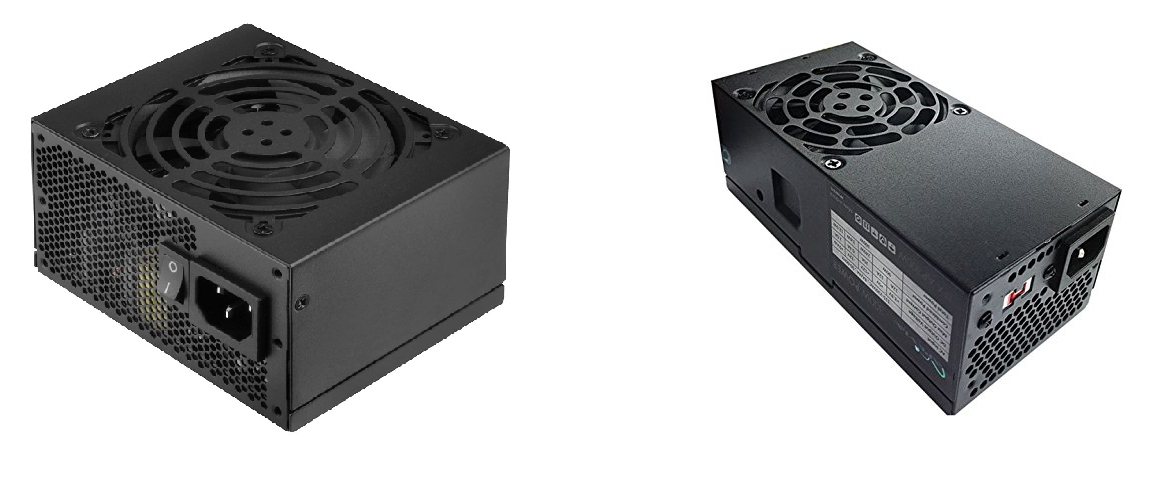The power supply is one of the key components in any computer system. Sometimes abbreviated by the community and IT professionals alike as ‘PSU’ (Power Supply Unit). PSU’s come in all different form factors, brands, shapes and sizes. In fact, no two power supplies (like with most computer parts) are the same!
In this article we're going to explore what some of the power supply specifications mean

Form factor
Just like hard drives, power supplies come in different shapes and sizes. The shape of the power supply is extremely important when building a PC. If you purchase a full size power supply, usually called ATX, or a small form factor called ITX, there may be physical limitations that will prevent you from installing it. Form factors are only a problem because we have different sized cases. You technically could use a full size power supply on a mini computer as long as the case will allow it. This also means that if you are not going to use a case and leave your computer system out in the open, it should still be compatible. When picking a size you should consider the case form factor as well.
Remember, form factor is basically the size of the unit. The same form factors are available when choosing a computer case. Mid to full size towers are normally called ATX whereas mini sized computers are called ITX or mini ITX. The best way to figure out what size your computer is, is to look at the manufacturer's website.
Wattage
The lifeblood of any power supply.
It’s the measurement of the maximum output the PSU can supply. This specification should reflect directly with what is inside your computer. Although technically, you can buy a $500, 1500w, it’s not the most cost/power efficient for the consumer.
For example, if you’re building a basic computer for internet browsing with no special cards installed, you can probably get away with buying a 400w power supply for about $40. Before purchasing a unit for yourself, you should look into what the goal of the build is and calculate how many watts you are going to need.
If your CPU requires 100w, a single hard drive requires 25w, two fans require a total of 10w, this build would only require at minimum a 150w to run properly.
On the other end of the spectrum, lets say your CPU requires 100w, your 5 hard drives in total require 125w, 4 fans that require 40w, a sound card requires 30w, two GTX 1080ti use 500w (250w each). The total output for your system is 800w at maximum. (you can find all of this information at the manufacturer's website for each part). It doesn’t mean that the computer will always pull 800w even when doing nothing (that would be an expensive electric bill) but, when everything is operating at the same time, the max draw would be at 800w. You will almost never get to your maximum draw, so you can probably purchase an 800w power supply and be fine. However, if you plan on overclocking, it may be better to purchase a 900w, or 1000w PSU for the added cushion.
The general rule is to have a power supply that can supply about 100w more than needed.

80 Plus Certification
Often times you’ll see the logo (above) in various colors (Bronze, Silver, Gold, Platinum,Titanium). Before I explain what each of these colors mean, we first need to understand how power supplies work. Computers need Direct Current (or DC Power), but your home outlet gives out Alternating Current (AC power). PSU’s take the AC power from the wall and convert it to DC -- but it’s not a 1 to 1 conversion.
What I mean by this is 100% of the AC power being passed through, isn’t converted to 100% DC power. Often times the DC conversion provides a loss anywhere between 1% to 30% (sometimes more) wasting energy. Another way to look at it is if we were converting the US dollar to the Canadian dollar. For every dollar you give the conversion store, they give you 70 cents.
An 80 Plus certification means that the power supply’s efficiency is at least 80% during different usages. These usage percentages are 20%, 50%, and 100% usage (10% only applies to Titanium)-- conversion efficiency must remain at 80%.
Here is a breakdown of what each color’s efficiency requirements (sourced by wikipedia; 115v is commonly used in the US, 230v in the EU)
https://en.wikipedia.org/wiki/80_Plus
At the end of the day, a certification doesn’t automatically mean it's a great power supply to buy. You should still rely on user reviews and word of mouth to determine that. In Fact, it’s a common misconception that the higher the rating the better the parts are inside each PSU. An 80 Plus Bronze can be just as reliable as a Titanium
At least in my opinion, it all depends on how the unit was manufactured and if you trust the brand behind the PSU.

